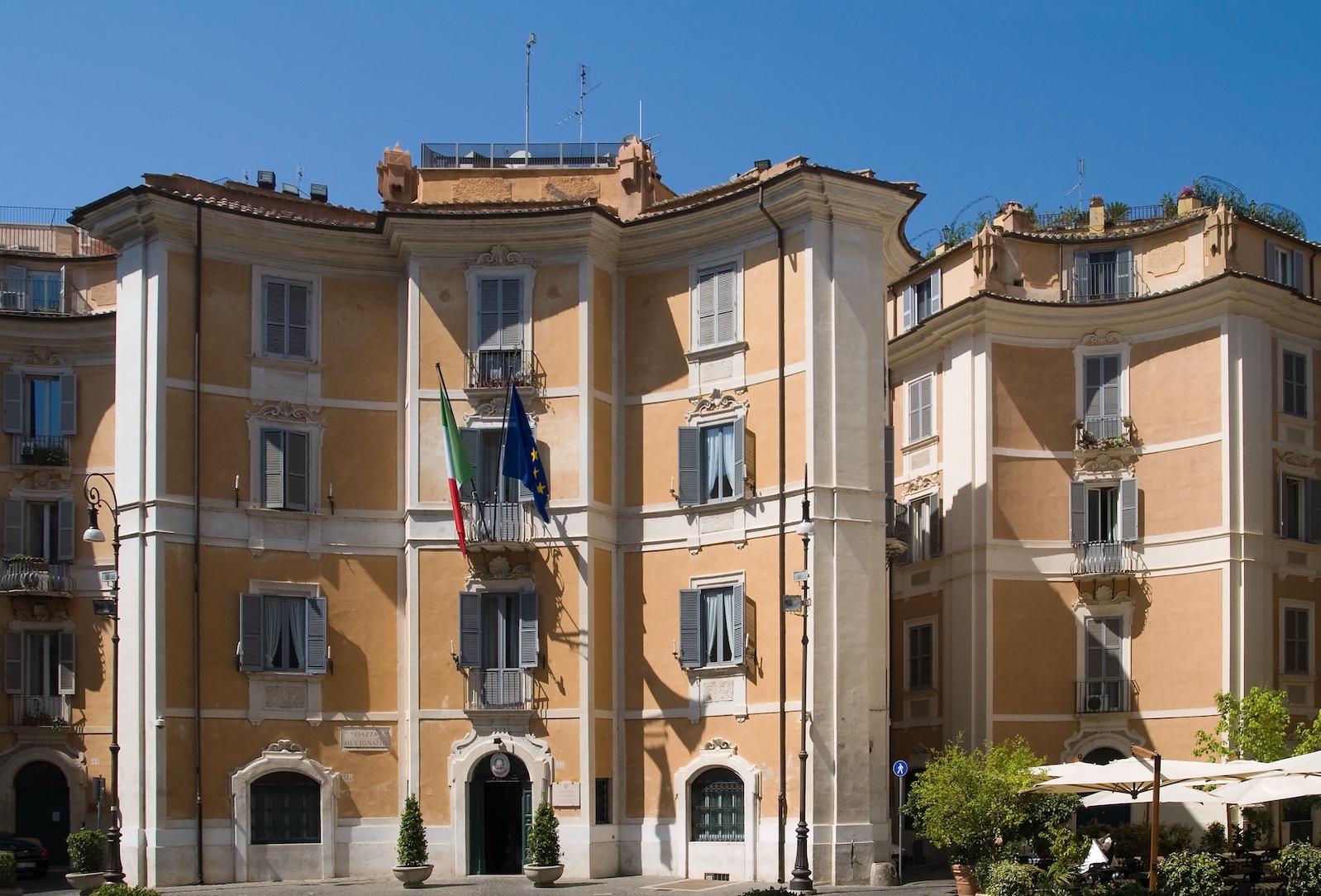I #Carabinieri del Comando per la Tutela del Patrimonio Culturale hanno recuperato a Bruxelles una statua romana in marmo raffigurante un "Togatus", risalente al I secolo a.C., trafugata dal parco di villa Marini Dettina a Roma nel novembre 2011. #TPC #PossiamoAiutarvi pic.twitter.com/l5DfMQzrGU
— Arma dei Carabinieri (@_Carabinieri_) April 13, 2021

Headquarters of the Carabinieri Art Squad. Piazza Sant Ignazio (Saint Ignatius' Square), Rome.
Mid-April, Italian authorities announced the rediscovery of a first-century Roman statue, missing for nearly a decade. Two off-duty art policemen spotted the artwork while perusing a Belgian antique shop in the Sablon neighborhood.
The statue’s size and tell-tale marks of excavation drew the officers’ attention. As members of the Comando Carabinieri Tutela Patrimonio Culturale—better known as Carabinieri TPC or the Carabinieri art squad—the men were able to reference TPC’s database of stolen and missing works which confirmed their suspicions.
The “Togatus” statue features a headless man wrapped in a toga. It was stolen in late 2011 from the Villa Marini Dettina archaeological site, located just outside of Rome. According to a statement released by the art squad, prosecutors are now investigating an Italian businessman, who has been operating under a Spanish pseudonym. This, after allegations that he received and exported the statue abroad.
The art squad was one of the world’s first law-enforcement groups dedicated to art and antiques crimes. Founded in 1969, it predates UNESCO’s first convention on the issue of cultural property theft by one year. The FBI did not establish its Art Crime Team until 2004.
Scotland Yard’s Art and Antiquities Unit was founded the same year as TPC but is much smaller and primarily located in and focused on London. Today, the Carabinieri art squad consists of twelve branches with “regional or interregional jurisdiction plus a [sub-unit] in Sicily” and about 300 officers.




























